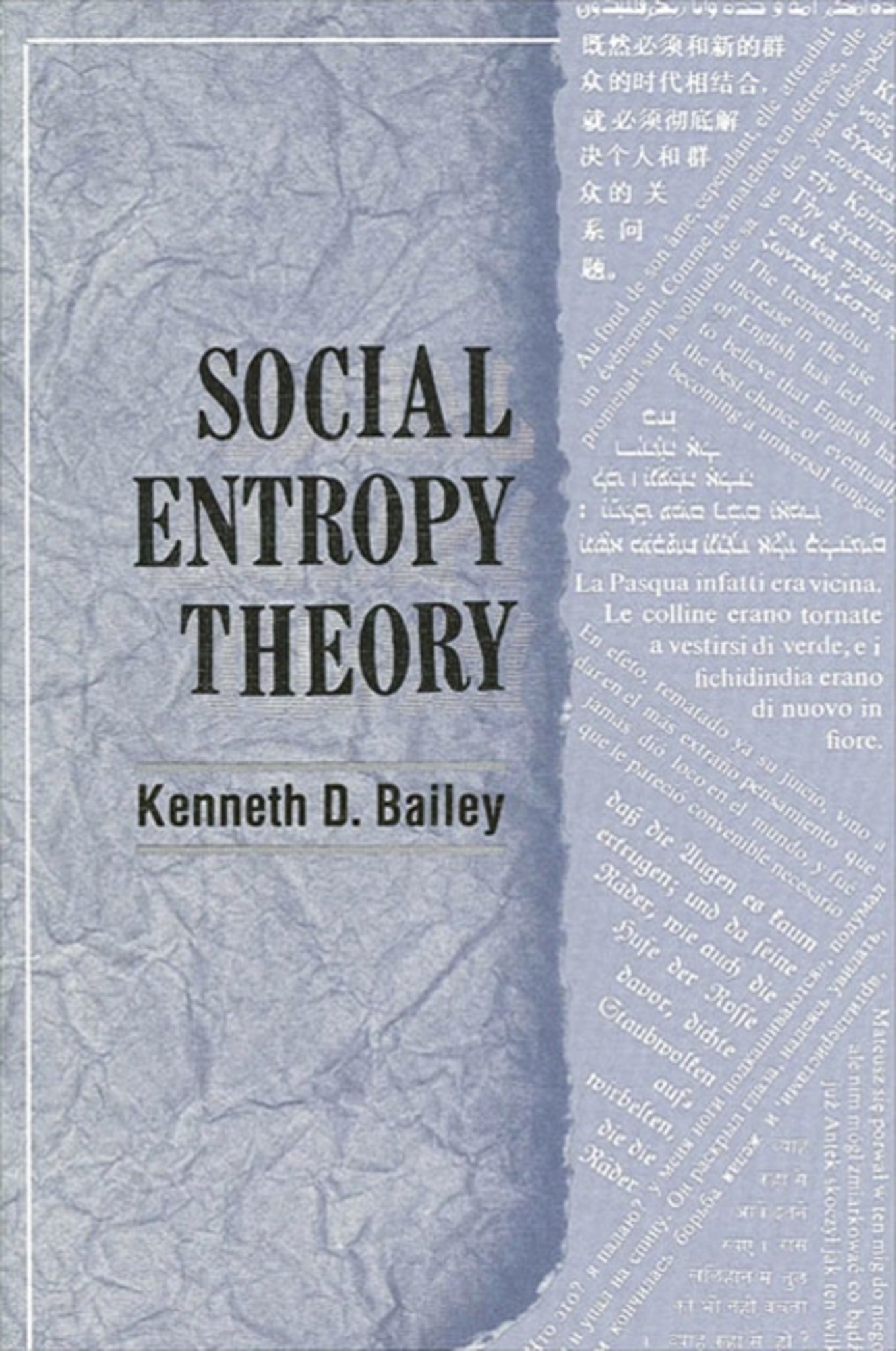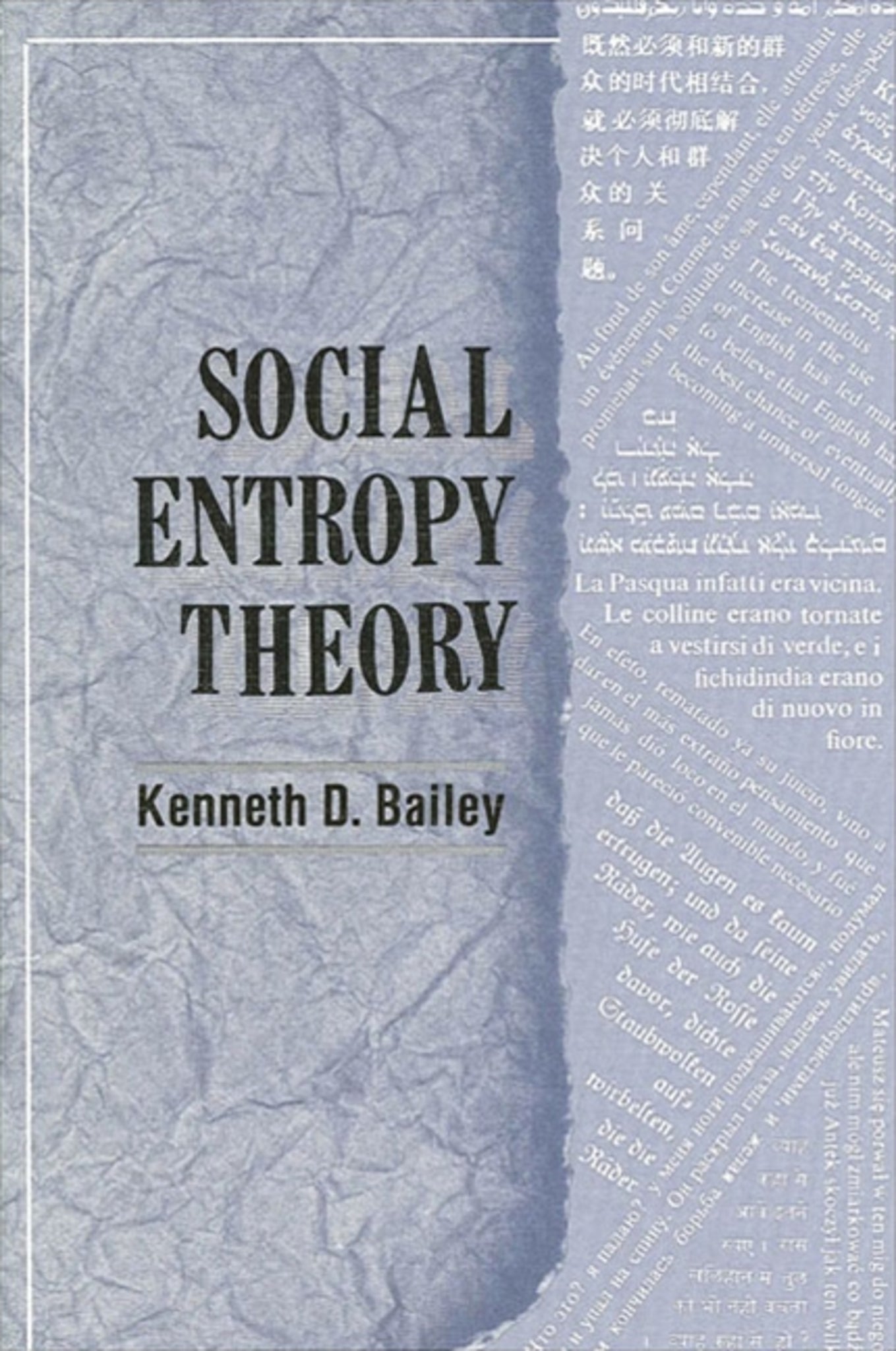We're sorry. An error has occurred
Please cancel or retry.
Social Entropy Theory

Some error occured while loading the Quick View. Please close the Quick View and try reloading the page.
Couldn't load pickup availability
- Format:
-
05 February 1990

Social Entropy Theory illuminates the fundamental problems of societal analysis with a nonequilibrium approach, a new frame of reference built upon contemporary macrological principles, including general systems theory and information theory. Social entropy theory, using Shannon's H and the entropy concept, avoids the common (and often artificial) separation of theory and method in sociology. The hallmark of the volume is integration, as seen in the author's interdisciplinary discussions of equilibrium, entropy, and homeostasis. Unique features of the book are the introduction of the three-level model of social measurement, the theory of allocation, the concepts of global-mutable-immutable, discussion of order and power, and a large set of testable hypotheses.


"A powerful and insightful general theory of society which resolves several well-known problems with past efforts." — Joseph Woelfel, State University of New York, Albany
"While specialized approaches do not have any way to indicate what is not being studied, an integrative approach such as Social Entropy Theory fills the critical role of illuminating gaps and inconsistencies in existing theory because it deals with the entire society, including those parts of it which narrower theories may not have specifically addressed. I think this is an important scholarly contribution. There is nothing else like it, and it deals with a very significant issue." — James Grier Miller, University of California, San Diego
List of Tables
List of Figures
Preface
1. Contructing a Theory of Complex Society
The Direct Strategy
Relation to other Formulations
The Relation of SET to Middle-Range and Micro Theory
The Relation of SET to General or Macro Formulations
Plan of the Chapters
2. The Isomorphic Concrete Systems Model
Beyond Functionalism
Functionalism
General Systems Theory
The Challenges
Meeting the Challenges
The Isomorphic Concrete Systems Model
Epistemology
Isomorphism
The Two-Level Model
Anomalies in the Two-Level Model
The Three-Level Model
Extensions of the Three-Level Model
Abstracted Versus Concrete Sociological Theory
The Complex Isomorphic Systems Model (X")
Holistic Model Adequacy
3. Social Entropy
The History of Social Equilibrium
Thermodynamic Equilibrium and Entropy
Nonthermodynamic Physical Equilibrium and Entropy
The Spencerian Dilemma
First Principles
Pareto
Equilibrium between Pareto and Parsons
Parsons
Moving Equilibrium
Equilibrium as an Analytic Device
Homeostasis
Summarizing the Breadth of Parsons' Equilibrium Concept
The History of Social Entropy
Prigogine
Use of Entropy
Statistical Formulations
Entropy in General Systems Theory
Verbal Formulations of Social Entropy
Evaluating the Literature on Social Entropy
4. Macrosociology
Key Societal Variables
Global Properties
Spatial Area (Expansion of Boundaries)
Population Size
Level of Living
Technology
Organization
Information
Distributional (Analytical) Measurement
Interrelationships among Variables
Global Measurement
Distributions
Exhaustiveness
Control
Internal Versus External Relationships
Internal Relationships
Open Boundaries
Summary
5. The Individual in Complex Society
Sorokin's Ten-Dimensional Structure
The Mutable Distributions
The Immutable Variables
Allocation Theory
Global Constraints
Change in Mutable Distribution Structure
Relevant Theories
Overview
Organization
Technology
Space
Information
Level of Living
Expectations and Goals
Summary
6. Organizations
Organizational Formation
Divisive Grouping Processes
Agglomerative Grouping Processes
Boundaries
Boundary Formation
Membership Boundaries
Outreach
Summary
Entropy and Information in Organizations
Multiple Membership
Concluding Remarks
7. The Central Problem of Social Order
Introduction
Social Order
Two Types of Order
Q- and R- Relationships
The Holistic Model of Social Order
Category Theory
Effect of Symbolic Structure on Action
Why Actions Are Replicated
Summary
Order and the Three Level Model
The Synchronic Nature of Markers
Markers and Mutables
Power and Conflict
Expectations and Power
Mutables and Conflict
Immutables and Conflict
Entropy and Inequality
Concluding Remarks
8. Statistical Entropy
Probabilistic Entropy
Number of Categories
Type B Mapping
Type C Mapping
The Marker (X") Level
Sample Size
Sampling Distribution
Relationship of Categorical Entropy to Continuous Variables
Categorical and Continuous Entropy
Continuous Entropy
Measuring Inequality
Continuous
Decomposition
Categorical Income Data
Measures of Population Diversity
Proportional Reduction in Error
Summary
9. Reflections and Hypotheses
Reflections
Chapter 1
Chapter 2
Chapter 3
Chapter 4
Chapter 5
Chapter 6
Chapter 7
Chapter 8
Hypotheses
Chapter 1
Chapter 2
Chapter 3
Chapter 4
Chapter 5
Chapter 6
Chapter 7
Chapter 8
Concluding Remarks
References
Author Index
Subject Index



